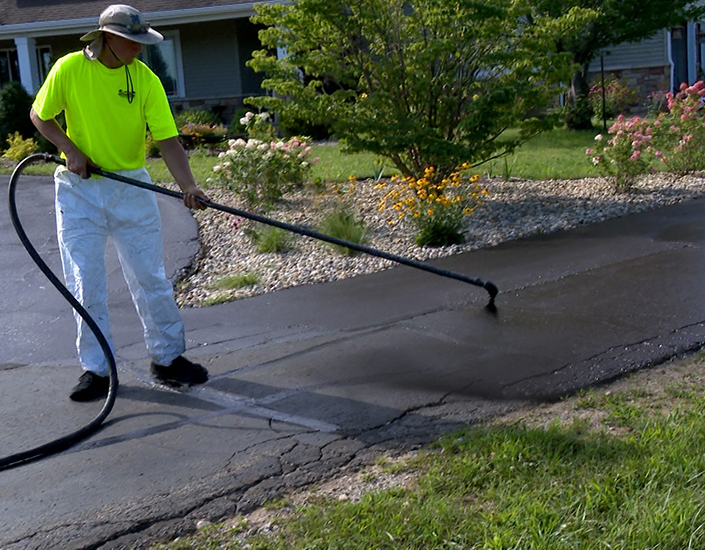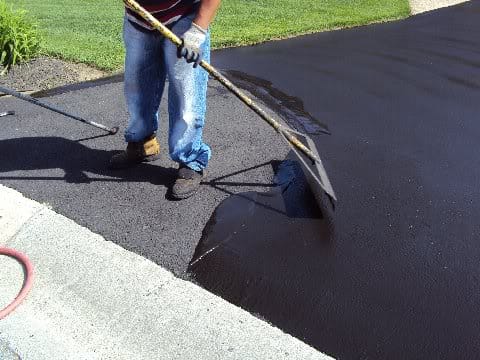Reliable Asphalt Repair: Cold Mix Sealing Techniques Revealed
Reliable Asphalt Repair: Cold Mix Sealing Techniques Revealed
Blog Article
Cold Mix Asphalt Vs. Hot Mix Asphalt: Which Is Right for You?

Structure Differences
Cold mix and warm mix asphalts vary considerably in their structure, with unique qualities that impact their efficiency and applications. Cold mix asphalt is generated by emulsifying the asphalt binder with water and an emulsifying representative before mixing it with accumulation. This technique permits the asphalt to be convenient at reduced temperature levels, making it excellent for momentary fixings and for usage in chillier climate conditions. Warm mix asphalt, on the other hand, is made at high temperatures, generally in between 300-350 ° F, which assists to attain much better compaction and a much more long lasting end product. The hot mix asphalt production procedure involves warming the aggregate and asphalt binder individually before combining them at the asphalt plant.
Moreover, cold mix asphalt has a tendency to be less thick and extra adaptable than hot mix asphalt. This flexibility makes it far better matched for locations with greater levels of movement, such as driveways or roads with rush hour. On the other hand, warm mix asphalt is understood for its high resilience and resistance to rutting and splitting, making it a recommended selection for freeways and high-traffic roadways where long life is vital.
Installment Refine Variations
The process of installing chilly mix and warm mix asphalt displays significant differences in their demands and procedures. Cold mix asphalt, being a much more versatile product, can be applied directly from the bag or container onto the pit or harmed location. It requires minimal preparation work, such as cleaning the location and condensing the chilly blend with hand tools. This makes it a hassle-free alternative for short-lived and quick solutions. On the other hand, warm mix asphalt necessitates a more intricate setup procedure. It entails heating up the mixture to heats prior to laying it down on an appropriately prepared base. The prep work consists of condensing the base, using a tack layer, and making use of hefty equipment like pavers and compactors for a long lasting and smooth finish. Due to the heating needs, warm mix asphalt installments are normally carried out by professionals with specific tools, making sure an extra permanent and structurally sound outcome.
Longevity and Long Life Variables
When taking into consideration asphalt choices, toughness and durability are critical aspects to review for enduring pavement efficiency,. Warm mix asphalt (HMA) is recognized for its remarkable durability and longevity. The heats throughout the laying and mixing procedure enable much better compaction, causing a denser and more powerful sidewalk framework. This brings about HMA being extra immune to heavy website traffic loads, harsh weather, and the effects of maturing compared to chilly mix asphalt (CMA)
In terms of durability, HMA commonly outshines CMA because of its exceptional toughness and resistance properties. HMA sidewalks have a longer service life, requiring much less regular repair work and maintenance, which can equate to cost financial savings in the future. Additionally, HMA pavements are a lot more easily customizable to meet details job requirements, further boosting their sturdiness.
Expense Factors To Consider
Thinking about the financial effects is an essential aspect when evaluating the choice in between warm mix asphalt (HMA) and chilly mix asphalt (CMA) for pavement tasks. While the preliminary expense of hot mix asphalt is generally higher than that of cool mix asphalt, HMA commonly gives a more economical remedy in the long run due to its official website premium longevity and durability.
In addition to product expenses, it's important to take into consideration the expenditures related to installment and upkeep when contrasting HMA and CMA. HMA typically calls for customized devices and competent labor for correct installment, which can affect general job expenses. Conversely, CMA is simpler to deal with and can usually be used making use of less complex strategies, potentially lowering installment costs. Ultimately, the choice in between HMA and CMA need to consider not just the preliminary cost but also go to website the long-term monetary ramifications to figure out the most affordable option for the specific sidewalk job.
Environmental Effect Comparison
Contrast of the environmental impacts between hot mix asphalt (HMA) and cool mix asphalt (CMA) exposes distinctive distinctions in sustainability practices. HMA manufacturing needs heats, bring about boosted power intake and greenhouse gas discharges. The procedure additionally launches unstable organic substances (VOCs) and harmful air toxins (HAPs) into the atmosphere. On the other hand, CMA is produced and applied at reduced temperatures, decreasing power usage and discharges significantly. The lower production temperatures of CMA lead to lowered fuel consumption and lower degrees of CO2 emissions, making it an extra ecologically pleasant choice.
Moreover, the use of CMA commonly involves reusing existing asphalt pavement, promoting resource conservation and decreasing the amount of waste sent to garbage dumps. By deciding for CMA over HMA, road construction tasks can contribute favorably to ecological preservation efforts.
Final Thought
Finally, the selection in between cold mix asphalt (CMA) and warm mix asphalt (HMA) depends upon various elements such as structure, installment process, resilience, durability, expense, and environmental effect. asphalt repair. While CMA uses a quick and affordable service for small repair work, HMA ensures exceptional longevity and long life for rush hour locations. Consider these factors web link thoroughly to establish which kind of asphalt is the best selection for your paving needs

Thinking about the economic implications is a critical aspect when assessing the selection between warm mix asphalt (HMA) and cool mix asphalt (CMA) for pavement tasks. While the initial price of hot mix asphalt is normally higher than that of cool mix asphalt, HMA typically supplies an extra economical solution in the long run due to its exceptional longevity and durability. cold mix asphalt.Contrast of the environmental impacts in between warm mix asphalt (HMA) and cool mix asphalt (CMA) exposes unique differences in sustainability techniques.In verdict, the choice between cool mix asphalt (CMA) and hot mix asphalt (HMA) depends on numerous factors such as structure, installment process, resilience, long life, cost, and environmental effect
Report this page